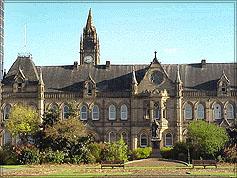Yorksview
| There are young people in
Middlesbrough these days who don’t realise that their town is in Yorkshire.
With the messing around with administrative boundaries since the early 1970s
and the temporary creation of areas like Teesside and Cleveland, all sorts of
confusion exists. Even the National Trust Handbook’s maps leave
Middlesbrough in a kind of no man’s land between Yorkshire to the south and
County Durham to the north. Of course Middlesbrough is in Yorkshire. The
boundaries of Yorkshire haven’t changed. Middlesbrough, Redcar, Saltburn-by-the-Sea,
Guisborough and Staithes are all part of Yorkshire. |
Town Hall |
JB
Priestley described Middlesbrough as ‘a dismal town’ and said that its
inhabitants had two passions – beer and football. A bit harsh. The town has
had a bad press.
Middlesbrough
grew rapidly after iron ore was discovered in the Cleveland Hills in 1850.
Industry developed and the population grew quickly. In the twentieth century
the chemical industry accelerated the growth. Today the population is about
145,000. The Transporter Bridge, opened in 1911, is the town’s best known
landmark. The Town Hall is a fine example of late Victorian Gothic
architecture. The new Cellnet Riverside Stadium is the home of Middlesbrough
Football Club, the Boro, a Premiership club with a loyal and devoted
following.

South
of Middlesbrough are the North Yorks Moors, a national park. Many are wild
heather- covered and flat topped, divided by deep valleys like Rosedale,
Farndale and Newton Dale. Walkers and motorists enjoy breath-taking views.
There are also cultivated woodlands like Dalby Forest and the remains of
monastic houses at Rievaulx, Rosedale, Mount Grace and Byland.
Captain
James Cook, as he became, was born at Marton. In the shadow of Roseberry
Topping is Great Ayton where he went to school before growing up and
discovering Australia. The cottage where he was born was shipped to Australia
stone by stone in 1934. A monument to Captain Cook on Easby Moor dominates the
Cleveland skyline.
Just
outside Middlesbrough is Ormesby Hall, an eighteenth century Palladian house
boasting fine plasterwork and elaborate carved wood decoration. The National
Trust has restored the laundry, scullery, game larder and kitchen to how they
were in Victorian times. The stable block is well worth seeing as is the
attractive garden and holly walk.
jdb
(images supplied)

